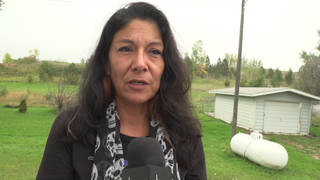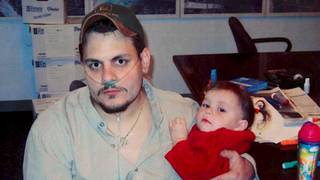
Topics
New yet-to-be-released report from the EPA’s inspector criticizes the White House for ordering the deletion of information warning downtown New York residents about possible health effects and preventing the release on information on how the public should clean contaminated apartments. [Includes Transcript]
Click here to read to full transcript In the days and weeks following the collapse of the World Trade Center, the White House pressured the Environmental Protection Agency not to warn the public about the potential health effects and to not issue guidelines for the public about cleaning apartments and offices.
That is the conclusion of a yet-to-be-released investigation by the EPA’s inspector general, according to a report in The New York Times. The report goes on to say the White House’s handling of situation was influenced strongly by its desire to see the stock markets quickly reopen on Wall Street.
The report details the role of the White House Council on Environmental Quality.
The report reads: “As a result of the White House C.E.Q.'s influence, guidance for cleaning indoor spaces and information about the potential health effects from WSTC debris were not included in the EPA's issued press releases. In addition, based on C.E.Q.'s influence, reassuring information was added to at least one press release and cautionary information was deleted from EPA's draft version of thatg press release.”
- Walter Hang, president of Toxic Targeting an environmental database company that tracks more than 5,000 individual toxic site in New York State.
- Hugh Kaufman, senior engineer for the Environmental Protection Agency and former chief investigator for the EPA ombudsman.
TRANSCRIPT
AMY GOODMAN: Here on Democracy Now!, the war and peace report. I’m Amy Goodman. As we talk about this latest report from the Inspector General’s office and the Environmental Protection Agency about allegations that the White House told the Environmental Protection Agency, pressured them not to warn the public about the potential health effects, not to issue guidelines for the public about cleaning apartments and offices after the September 11th attacks in New York. We’re joined on the telephone by Walter Hang, he is president of Toxic Targeting, an environmental database company that tracks more than 5,000 toxic sites in New York state. Also Hugh Kaufman, senior engineer for the Environmental Protection Agency and a former chief investigator for the E.P.A. ombudsman. Hugh Kaufman can you talk about the significance of this Inspector General report?
HUGH KAUFMAN: Well, I think the Inspector General told your local Congressman, Congressman Nadler many months ago that they would publish their report by May of this year. That report never came out. Apparently that report was leaked to the New York Times last week, I haven’t seen the report and very few people have. Basically, the report again documents what the ombudsman had documented over a year and a half ago: that the Environmental Protection Agency did not follow their usual procedures in a major emergency such as when the World Trade Towers came down. And instead, told the public that things were safe without even having the monitoring done to determine whether it’s safe or not. The significance of that is that up until the World Trade Towers came down, the Environmental Protection Agency had procedures to follow to protect the public if a terrorist attack occurred and those procedures weren’t followed and tens of thousands of people were put at and are at health risk because E.P.A. did not follow it’s usual procedures. The first responders, of course, received the major acute problems and of course we’re seeing now that over half of those first responders are sick and the concern is that a large number of them will die very early because of cancer and other health effects because E.P.A. did not do it’s job properly.
AMY GOODMAN: Walter Hang, can you respond?
WALTER HANG: I just think that this is an unprecedented breach of public trust, when I first saw the images of the impact on the World Trade Center and when I saw the towers coming down I knew that that dust that was flying out of the towers was asbestos contaminated because I knew that in 1971, Mount Sinai School of Medicine had done a study that showed that asbestos was used to insulate the superstructure of the building. Afterwards when I saw the fire at World Trade Center number seven, I knew that underneath the building was a giant substation that controlled the delivery of electricity to all of southern Manhattan and I knew that there were huge transformers that were insulated with this oil that potentially could contain Polychlorinated Biphenals or PCBs, I knew there was a high voltage line from that giant substation to another substation in Brooklyn, and I knew if the building collapsed then the line would be severed and perhaps tens of thousands of gallons of oil would flow into the hall and catch fire. And If those materials contained PCBs then the burning of that oil would be perhaps an unprecedented catastrophe because of the production of very, very toxic dioxins and Dibenzophurans and others which are among the most toxic compounds known to science. Indeed afterwards PCBs were detected in air, in dust samples all around the site and perhaps for the first time ever Dioxin was detected in ambient air so I just think that the E.P.A. should have alerted the public to these problems, they should have protected the workers at the site and I tried to alert the authorities to this problem that fall when the fires were still burning and I just think that this is a very important issue that needs additional investigation.
AMY GOODMAN: The New York Times which first reported on the Inspector General’s report that has not yet been released quotes the environmental protection agency. We attempted to get the E.P.A. on but they said they would not come on. The report has irritated agency officials, says the Times, including Marion Lamont-Herenko, the acting administrator who said the Inspector General’s office “did not understand how serious a crisis the attack on the trade center presented.” She said it’s almost like an academic look at an average emergency and 9/11 wasn’t academic or average. The agency has been criticized before for the statements it made about the quality of the attack. Your response to that, Hugh Kaufman?
HUGH KAUFMAN: Well, first of all you got to understand that when the World Trade Towers came down it was much the same as if a chemical plant blew up. Things that periodically happen, especially around the Houston area. And as a result of that for over 20 years, the agency has procedures for basically taking samples and communicating to the public, evacuating the public, et cetera. I think the difference between the World Trade Center catastrophe and when a chemical plant goes up, is that there’s a higher density of population in the New York area than say around the Houston ship channel. But basically in the mid 1990’s, then-president Clinton created a presidential directive that set the procedures based on our 20 years experience for responding to something like that. The major problems aren’t just asbestos and PCBs when the trade towers came down, you also have a tremendous amount of lead. Every computer has seven pounds of lead. I think you know how many computers were in that building. Also the smoke detectors have radioactive amarisium and there are tens of thousands of those smoke detectors that were in that building. PLUS the ultra fine particulates, we had testimony in our two 11-hour hearings that Congressman Nadler asked us to hold where we had the experts who had investigated the Kuwaiti oil field fires and found that a month after the World Trade Towers came down the ultra fine particulates a mile north of the site of those levels were higher than when the Kuwaiti oil field fires were burning. So I think there was tremendous documentation ultimately about the magnitude of the problem and the impacts to working spaces and living spaces in New York and the agency did not follow its usual procedures for clean up and communication with the public that they had followed in other catastrophes when chemical plants, for example,or refineries would blow up. I think that was the concern. Now the inspector general’s draft report apparently, according to the Times, claims that that was done as a result of White House pressure. But I’m not even sure that report will ever see the light of day since it was promised by the Inspector General to Congressman Nadler to be published last may.
AMY GOODMAN: You are listening to Democracy Now! Hugh Kaufman, senior engineer for the Environmental Protection Agency and former chief investigator for the E.P.A. ombudsman. You were certainly issuing warning calls at that time. Can you talk about what you understood, Hugh Kaufman, in the E.P.A. at the time of the September 11th attacks.
HUGH KAUFMAN: Basically one of the concerns when we started to investigate which was a couple months after the attacks that we had was that E.P.A. was providing false information to the public to just use wet rags and mops to clean their apartments and that was certainly not going to do the job. The heating, ventilating and air conditioning systems in the buildings needed to be thoroughly cleaned by trained hazardous material cleaners. And government procedures had to be followed. On top that the working crews at the site were not wearing proper protective gear and in fact congressmen, senators, even the president of the United States were not wearing respirators which they should have been wearing when they were around ground zero. Instead they were wearing these paper masks just like some of the first responders and because of the ultra fine particulates the paper masks would actually bring more contamination deeper into the lungs than if they didn’t even have paper masks. So we started sending warnings to the first responders and to the public about the magnitude of the problem and what needed to be done. And of course the political management, Christine Todd Whitman and her folks were claiming that everything was safe and now apparently the inspector general report has also documented that those statements were false.
AMY GOODMAN: What about, Walter Hang, putting this in the context of the time and now the E.P.A. administrator saying you have to look beyond this just being an emergency–that you have to look at the context and that the government wanted to be reassuring.
WALTER HANG: I don’t disagree with the need to reassure the public in the immediate aftermath of a tragedy like the World Trade Center. But the problem is that the E.P.A. had an enormous amount of data showing that more than perhaps 200,000 gallons of highly toxic and flammable materials were on fire that pollution was just pouring out of the hole in one of the most densely developed areas of the country. And that problem is still ongoing. These contaminants, the lead, the Dibenzophuran the other toxic chemicals that released accummulated and they’re not breaking down. The lead will be there for decades, hundreds of years–it’s basically a permanent pollution problem. And the site has never been added to either the state superfund, federal superfund and the Dioxin levels that were identified would have required an evacuation, entire communities such as Times Beach, Missouri, have been wiped off the map because of Dioxin contamination. This problem simply hasn’t been addressed. They found PCBs in dust in buildings at 32 times the amount that constitutes hazardous waste. So ever day people are down in that area walking around exposed to the dust, potentially getting it in their systems and over the course of time that can increase their health problems. So emergency response is one thing, but ongoing failure to deal with this problem is another. And we just can’t get the authorities to face this issue full force and solve it.
AMY GOODMAN: Well the government is not only not telling people those things, but using financial incentives to get people to move into that whole area. Giving something like, I believe, $6,000 a year rent subsidies, a lot of people are coming from out of state to live in these areas to fill up the buildings in the area around the World Trade Center.
WALTER HANG: I think the situation is that they’re so desperate to get the city back on its economic footing that they’re overlooking the long term health implications. People were returning to some of the homes and offices in the area and you could literally see their footprints on the carpet where the asbestos, where the dust, the contaminated materials had accumulated on the floor. And in many cases those areas have not been fully cleaned out. They haven’t removed the carpeting; they haven’t removed the ceiling tiles; they haven’t cleaned out the ventilation systems. These contaminants are present in such tiny, tiny amounts that they’re all but in visible to the naked eye, but people breathing these materials over the course of years can suffer long term health problems. So I think we need an open discussion about these risks. I think these sites need to be more fully investigated and cleaned up and that way I’m sure that we can resolve this. But it’s going to be an incredible long term fight.
AMY GOODMAN: Well, I want to thank you both very much for being with us. Walter Hang, president of Toxic Targeting an environmental database company that tracks more than 5,000 individual toxic sites in New York and Hugh Kaufman, senior engineer for E.P.A. and former chief investigator for the E.P.A. ombudsman. LAST question to Walter Hang, and that is: What can people do to protect themselves right now, what do you think is the single most important thing for those who live in and around the area and how far out, for example, Christine Todd Whitman’s own New Jersey are people affected.
WALTER HANG: Well, they can go to www.toxicstargeting.com and they can look at the letter and data set that I provided to the authorities in November of 2001 and they can see exactly the kinds of compounds that were released and then I think the key thing is to respond to the U.S. E.P.A. and essentially say: put out the information, let us look at the data and then if you live in that area and you’re concerned about your health, then get the E.P.A. in, use the appropriate technology to find out whether or not your space is contaminated. If you have children, if you have your own health risks that you’re concerned about, get the E.P.A. to respond directly. Right after the tragedy the U.S. E.P.A. was actually continuously monitoring the air from their offices just five or ten blocks north of the World Trade Center so there’s a lot of information and the E.P.A. certainly has the capacity to do additional studies. Once that information is available then people can make their decisions based on data for their apartment, their office and drive the remediation process much more rapidly forward.
AMY GOODMAN: Walter Hang, Toxic Targeting, Hugh Kaufman former chief investigator for the E.P.A. ombudsman. Thank you.











Media Options